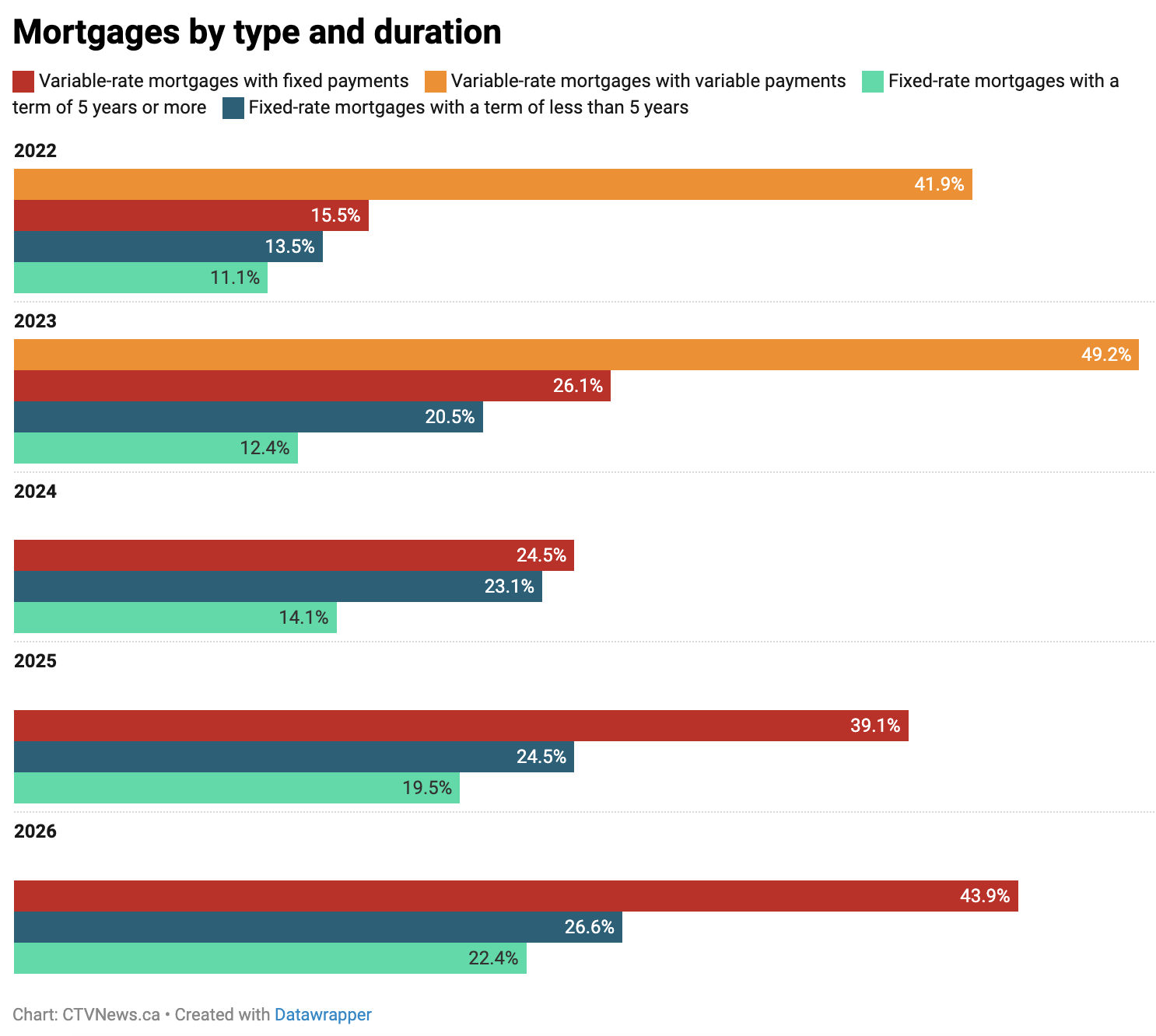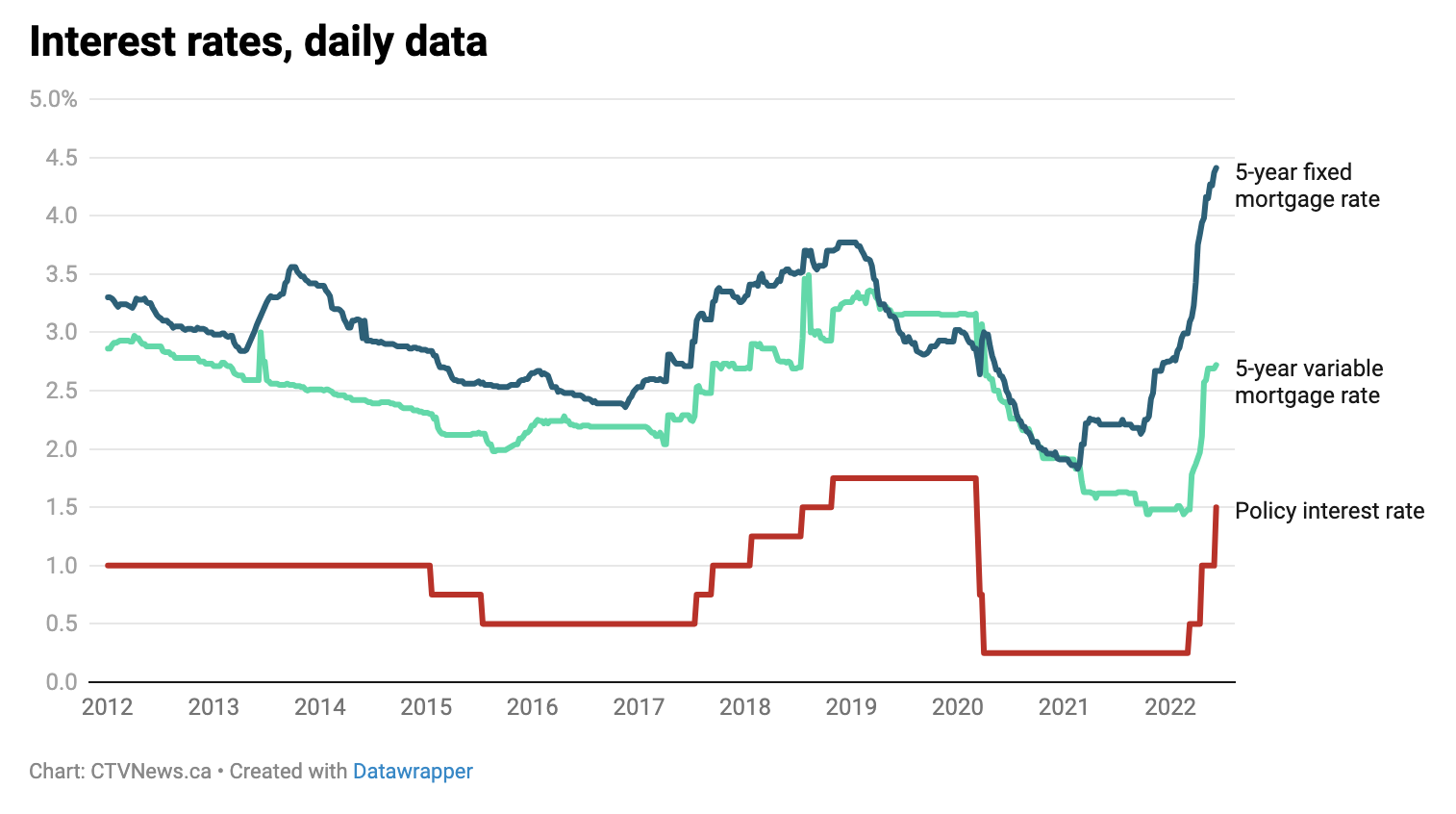Let’s Talk About The ‘infinity mortgage’… What Do Experts Have To Say About It?

That many Canadians with mortgages are seeing their amortization periods stretched in a way they’ve never seen before is something economists and mortgage brokers agree on.
But how “infinity mortgages” really impact homebuyers(opens in a new tab), mortgage default rates and the economy is less clear, experts say. And while they might not stay infinite for everyone, they’re not benign.
Since the Bank of Canada began a series of aggressive prime lending rate hikes(opens in a new tab) in March 2022, mortgage interest costs have risen too, by as much as 30.6 per cent as of July.
What’s an infinity mortgage?
Unlike borrowers with fixed-rate mortgages, those with variable-rate mortgages have seen the changes reflected in their loans in one of two ways.(opens in a new tab) Borrowers with variable-rate variable-payment mortgages have seen their monthly payments swell with the interest rate.
Those with fixed-payment mortgages have seen their amortization periods swell instead, from the typical 25 or 30 years to, in some cases to 70 or more. In other cases, says mortgage broker Ron Butler, borrowers’ online loan profiles have started to display an infinity symbol for their amortization period where a number should be, hence, the “infinity mortgage.”
“The (bank’s) computer cannot calculate this moment when your payment is less than the required interest,” Butler told CTVNews.ca in a phone interview on Wednesday. “When the interest is more than your payment, the computer gives up and shows infinity sign.”
According to Randy Robinson, political economist and the director of the Canadian Centre for Policy Alternatives’ Ontario office, as many as one in five mortgage holders have seen their amortization periods stretch this year.
“The Bank of Canada said back in November that 13 per cent of all mortgage holders in Canada were in that situation. Since then, there have been different reports coming out from the National Bank and Desjardins saying that number is probably more like 17 per cent,” Robinson told CTVNews.ca on Wednesday. “And based on how they’re calculating it, I think the number is actually more like 20 per cent now.”
Personal finance expert and financial counselor Jessica Moorhouse believes many of these borrowers are people who, like her, bought their homes during the pandemic when interest rates were low, the Bank of Canada said it would keep them low, and a variable-rate fixed-payment mortgage made sense.
“A lot of people bought, thinking interest rates were going to remain low because they had remained low for so long. And now they’re in a situation where they’re saying, ‘Oh, gosh, now I’m not sure if I can afford my house anymore,'” she told CTVNews.ca in a phone interview on Wednesday. “And so that’s why there’s a lot of talk about more defaults happening in the future.”
For the most part, borrowers whose amortization periods have ballooned to 50, 70 or an infinite number of years amid 15 months of interest rate hikes will see those periods reset back to typical numbers when it comes time to renegotiate their mortgage contract at the end of the current term. If interest rates have dropped by that time, they’ll be in good shape. If interest rates are still high, many will be forced to accommodate a dramatic increase to their monthly mortgage payments in order to pay their mortgages within their original amortization periods amid interest rate inflation.
At this point, the infinity symbol in their online banking goes away, but the monthly payment amount becomes, for many people, difficult or impossible to cover.
“We’re talking in some cases, an extra $1,000 a month is not unheard of at all,” financial advisor Preet Banarjee told CTVNews.ca in a phone interview on Wednesday. “And that’s freaking people out.”
Stuck in an infinity mortgage?
If at some point during a mortgage term, interest rates rise enough so that a borrower’s set monthly payment only covers their interest, that borrower has hit their trigger rate. Once a borrower hits their trigger rate, they are no longer paying down the principal of their mortgage. According to Robinson, borrowers can, and do, find themselves trapped in this scenario for long periods of time.
“My estimate is that there must be at least a half a million households in Canada who are facing this problem where… they’re not reducing the principal at all,” Robinson said. “That’s a really, really conservative estimate, if the numbers I’ve been reading are correct. So it is a big deal.”
This is when a mortgage can begin to feel infinite. Robinson says some people in this position spend the rest of their lives paying their lender.
“People who want to become homeowners do so because they want to escape that kind of having to pay for their entire life,” Robinson said. “And if you die before your mortgage does, well, that’s what happened to you. You paid for your entire life.”
Borrowers who either can’t make their monthly payments or who can only afford to cover the interest on their mortgage are left with a few options. They can try to work out an alternative solution with their lender, think hard about ways to free up more cash flow for their mortgage payments, default on their payments or sell.
With so many Canadians facing these choices, it’s easy to imagine a wave of mortgage defaults and foreclosures sweeping homebuyers in the not-too-distant future if interest rates don’t fall soon.
However, Robinson said it’s unlikely to happen on a large scale, both because borrowers tend to prioritize paying their mortgages at the expense of other bills, and because banks aren’t in the business of managing defaults.
“We are not seeing an upswing in arrears on mortgages right now, but we are seeing a little bit of an uptick in people going delinquent on smaller loans like car loans,” he said, “and that usually is a sign that they’re moving all of their assets or all of their income towards the house because ‘We’ve got to save the house.'”
Banks don’t want borrowers to default either, so they offer fixed-payments and lengthened amortization periods as a shock absorber to get borrowers at least through the present term.
“When you default, [lenders] have ways to recover their potential losses, but it’s not really the business that they want to be in,” Robinson said. “So they want to accommodate you wherever they can, just so you can keep making the payments.”
One factor mortgage broker Ron Butler said could trigger a wave of defaults will be if Canada has, in fact, entered a recession.(opens in a new tab)
“If the recession hits, default rates will rise because the one guarantee of default is greatly enhanced unemployment,” Butler told CTVNews.ca in a phone interview on Wednesday. “Unemployment creates default. Historically, mortgage rates going up does not create defaults.”
Canada’s unemployment rate aside, experts agree Canadian homebuyers are nonetheless facing challenges on a scale they’ve never faced before.
“In the history of mortgage rate increases, there has never been this speed and this intensity of increases,” Butler said. “We went from 1.45 per cent to 6.45 per cent. That’s like 285 per cent. Never, in this short period of time, has the rate gone up 285 per cent.”
Preet said the challenges posed by these unprecedented circumstances could have lasting effects for borrowers who sacrifice to pay their mortgages or are forced to default, entire generations of young Canadians priced out of home ownership and an economy shrinking under the pressures of inflation.
“A lot of households are going to get really pinched,” he said.
Below are a few charts that visually explain the situation.










